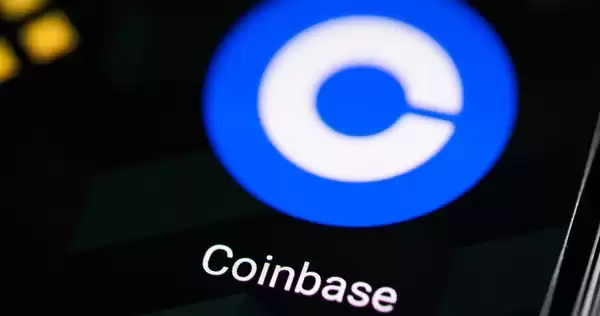-
 bitcoin
bitcoin $124586.364639 USD
0.62% -
 ethereum
ethereum $4670.671710 USD
3.33% -
 xrp
xrp $2.983701 USD
0.18% -
 tether
tether $1.000175 USD
-0.03% -
 bnb
bnb $1209.430642 USD
2.76% -
 solana
solana $231.365861 USD
0.51% -
 usd-coin
usd-coin $0.999665 USD
-0.02% -
 dogecoin
dogecoin $0.264657 USD
4.46% -
 tron
tron $0.346415 USD
1.60% -
 cardano
cardano $0.871586 USD
3.70% -
 chainlink
chainlink $23.451270 USD
7.56% -
 hyperliquid
hyperliquid $46.860071 USD
-2.96% -
 ethena-usde
ethena-usde $1.000120 USD
0.04% -
 sui
sui $3.611279 USD
1.08% -
 stellar
stellar $0.407149 USD
0.96%
Coinbase contract trading secrets
Contract trading on Coinbase empowers traders to exploit price fluctuations of crypto assets through meticulous management of risk, leverage, and market analysis, paving the way for substantial profit generation.
Nov 12, 2024 at 08:28 pm

Contract trading on Coinbase is a powerful tool that allows traders to capitalize on price movements of underlying crypto assets through the use of futures contracts. By skillfully navigating the complexities of contract trading, traders can unlock significant profit-generating opportunities. This comprehensive guide will delve into the intricacies of Coinbase contract trading, empowering traders with the knowledge and strategies necessary to achieve success.
Step 1: Understanding Contract Trading Basics- Futures Contracts: Futures contracts are agreements to buy or sell an underlying asset at a predetermined price and date. They provide traders with leverage, allowing them to magnify potential profits while also amplifying risk.
- Long and Short Positions: Traders can take long or short positions in futures contracts. A long position anticipates an asset's price to increase, while a short position bets on a price decrease.
- Margin and Funding: Contract trading requires traders to maintain a margin, which acts as collateral to cover potential losses. Funding fees are charged to traders holding positions overnight.
- Asset Selection: Carefully consider the underlying asset's volatility, trading volume, and market sentiment when selecting futures contracts.
- Contract Expiration: Choose contracts with expiration dates that align with your trading strategy. Long-term contracts offer more flexibility but also carry higher funding fees.
- Leverage Considerations: Adjust the leverage ratio to manage risk and optimize potential returns. Higher leverage enhances profit potential but also increases the likelihood of losses.
- Technical Analysis: Use charting tools and indicators to identify market trends and price patterns. This aids in making informed decisions about trade entry and exit points.
- Fundamental Analysis: Monitor news, economic data, and social media sentiment to gauge market sentiment and potential price movements.
- Order Book and Depth Chart: Study the order book and depth chart to assess market liquidity, support and resistance levels, and potential reversal points.
- Limit Orders: Set limit orders to buy or sell at a specific price, ensuring trade execution only when the desired price is reached.
- Market Orders: Execute market orders to buy or sell immediately at the best available market price. This option offers instant execution but may result in slippage.
- Stop-Limit Orders: Use stop-limit orders to minimize losses or lock in profits. These orders are triggered when a predefined price level is reached, then executed as a limit order.
- Position Sizing: Determine the appropriate trade size based on your risk tolerance and account balance. Avoid putting excessive capital at risk on any single trade.
- Stop-Loss Orders: Employ stop-loss orders to automatically close positions when the asset's price moves against your trade, limiting potential losses.
- Trailing Stop-Loss Orders: Use trailing stop-loss orders to adjust the stop-loss price as the asset's price moves in your favor, protecting profits.
- Trade Management: Continuously monitor open positions and adjust them as needed to adapt to changing market conditions.
- Profit Targets: Determine profit targets in advance to secure gains and minimize risk. Closing positions at predetermined targets ensures a consistent approach to profit-taking.
- Performance Analysis: Regularly review trading history to identify areas for improvement. Track win rates, profit/loss ratios, and identify patterns in successful and unsuccessful trades.
Disclaimer:info@kdj.com
The information provided is not trading advice. kdj.com does not assume any responsibility for any investments made based on the information provided in this article. Cryptocurrencies are highly volatile and it is highly recommended that you invest with caution after thorough research!
If you believe that the content used on this website infringes your copyright, please contact us immediately (info@kdj.com) and we will delete it promptly.
- BlockDAG, DOGE, HYPE Sponsorship: Crypto Trends Shaping 2025
- 2025-10-01 00:25:13
- Deutsche Börse and Circle: A StableCoin Adoption Powerhouse in Europe
- 2025-10-01 00:25:13
- BlockDAG's Presale Buzz: Is It the Crypto to Watch in October 2025?
- 2025-10-01 00:30:13
- Bitcoin, Crypto, and IQ: When Genius Meets Digital Gold?
- 2025-10-01 00:30:13
- Stablecoins, American Innovation, and Wallet Tokens: The Next Frontier
- 2025-10-01 00:35:12
- NBU, Coins, and Crypto in Ukraine: A New Yorker's Take
- 2025-10-01 00:45:14
Related knowledge

Practical parameter settings for a Bitcoin multi-timeframe moving average system
Sep 18,2025 at 10:54pm
Optimizing Timeframe Combinations for Bitcoin Trading1. Selecting appropriate timeframes is crucial when building a multi-timeframe moving average sys...

How can I filter out false breakouts in Dogecoin high-frequency trading?
Sep 22,2025 at 01:00am
Understanding False Breakouts in Dogecoin Trading1. A false breakout occurs when Dogecoin's price appears to move beyond a defined support or resistan...

Techniques for identifying tops and bottoms in the Bitcoin on-chain NVT model
Sep 20,2025 at 07:54pm
Understanding the NVT Model in Bitcoin Analysis1. The Network Value to Transactions (NVT) ratio is often described as the 'P/E ratio' of the cryptocur...

What does the surge in open interest in Bitcoincoin futures mean?
Sep 20,2025 at 11:18pm
Understanding the Surge in Dogecoin Futures Open Interest1. A surge in open interest within Dogecoin futures indicates a growing number of active cont...

How can I use the Ethereum USDT premium to gauge market sentiment?
Sep 18,2025 at 11:55pm
Understanding the Ethereum USDT Premium1. The Ethereum USDT premium refers to the price difference between USDT (Tether) traded on Ethereum-based plat...

What should I do if Ethereum staking yields decline?
Sep 20,2025 at 06:18am
Understanding the Causes Behind Declining Ethereum Staking Yields1. The Ethereum network transitioned to a proof-of-stake consensus mechanism with the...

Practical parameter settings for a Bitcoin multi-timeframe moving average system
Sep 18,2025 at 10:54pm
Optimizing Timeframe Combinations for Bitcoin Trading1. Selecting appropriate timeframes is crucial when building a multi-timeframe moving average sys...

How can I filter out false breakouts in Dogecoin high-frequency trading?
Sep 22,2025 at 01:00am
Understanding False Breakouts in Dogecoin Trading1. A false breakout occurs when Dogecoin's price appears to move beyond a defined support or resistan...

Techniques for identifying tops and bottoms in the Bitcoin on-chain NVT model
Sep 20,2025 at 07:54pm
Understanding the NVT Model in Bitcoin Analysis1. The Network Value to Transactions (NVT) ratio is often described as the 'P/E ratio' of the cryptocur...

What does the surge in open interest in Bitcoincoin futures mean?
Sep 20,2025 at 11:18pm
Understanding the Surge in Dogecoin Futures Open Interest1. A surge in open interest within Dogecoin futures indicates a growing number of active cont...

How can I use the Ethereum USDT premium to gauge market sentiment?
Sep 18,2025 at 11:55pm
Understanding the Ethereum USDT Premium1. The Ethereum USDT premium refers to the price difference between USDT (Tether) traded on Ethereum-based plat...

What should I do if Ethereum staking yields decline?
Sep 20,2025 at 06:18am
Understanding the Causes Behind Declining Ethereum Staking Yields1. The Ethereum network transitioned to a proof-of-stake consensus mechanism with the...
See all articles










































































